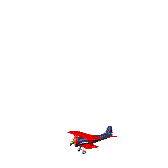Flight Instruction Training Philosophy
As a flight instructor, I believe
it is my responsibility to make my students into the type of pilot in whose
plane I would be willing to put my own family. This means I need to believe they
have good decision making skills, good flying skills, their piloting methodology
intrinsically includes safety procedures, and that they have the tools needed to
not only fly the plane safely when things are going well, but also if things go
wrong.
At the same time, I know that it
is important that the student enjoy the flight training experience. Not only
will they feel they are getting more value for their money by learning and
having fun at the same time, but they will learn better because a positive
experience supports and reinforces proper, safety-oriented habit patterns. Also,
because the student finds the flight training process to be a positive part of
their life, they are much more likely to complete the flight training despite
outside issues that frequently interfere with goal completion. I believe this is
one the reasons that my student completion rate is much higher than the national
average.
The trick, of course, is to find a
balance between the two seemingly opposing goals. This is why I consider the
flight training experience to be more of a collaborative effort than a give and
take relationship. Like any relationship, good communication is essential for
optimal effectiveness. Therefore, not only do I give the student feedback on how
their training is progressing, buy I also ask that the student give me feedback
on the workload level that I am requiring of them. On one side of the proverbial
scale, I am trying to maximize the value of the money they are spending by
imparting as much knowledge and skill in as little time and cost as possible. On
the other side I am trying to keep the flight training a fun, interesting, and
positive experience. Only the student knows how much weight they want to place
on each side of the scale at any given time, so good two way communication
throughout the flight training process is not only important, it is essential.
Another way I try to maximize the
students value is to teach each lesson in relation to how they would handle the
situations they may encounter in real flying, i.e., I teach them how to be a
good pilot, not just how to pass the check-ride. This ensures the knowledge and
skills they have learned will be ready to hand when they are needed.
Another way I seek to maximize the
student's value is to ensure their flying skills are reinforced to the point
that they will be able to retain them with minimal loss for a long period after
they have completed training. This means the training will take a little longer,
but it also means that the student will not stop flying after training
completion because they feel incompetent after a period of non-flying. It
also means the pilot will not get themselves into trouble due to their skills
and knowledge deteriorating rapidly after training completion.
Yet another way I work to maximize
the student's training value is to avoid the common instructor error of teaching
their student only how to fly a certain airframe. Instead, my training model is
focused on procedures that will readily carry across to other airframes, i.e, I
teach them how to fly airplanes, not an airplane. For example: Instead of
teaching that a certain power setting works in the training plane, with just the
two of us on board, on an average day, and expecting them to memorize it; I
teach them how to determine the required power setting themselves. Then, in the
future, when the aircraft type, weight, environment, and other conditions are
different, the student can and will be able to handle the new airframe and/or
situation skillfully without extensive additional training being needed.
I could go on and on about all the methods I have developed over the years to increase the value of the training I provide. However, by now it should be obvious that, while the student who places low cost of training as their sole or overriding consideration will be more satisfied with an instructor who teaches to minimums only, the student who seeks to receive the utmost value for their dollar has come to the right place.

